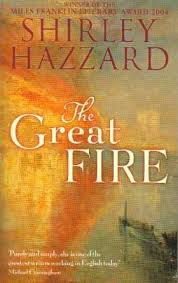 Fine writing is the main attraction of this novel, set in Japan and China immediately after WW II. Individual scenes and character gestures are sometimes done with such elegance and grace that the prose verges on poetry.
Fine writing is the main attraction of this novel, set in Japan and China immediately after WW II. Individual scenes and character gestures are sometimes done with such elegance and grace that the prose verges on poetry.
“Until this, war has been the way out, for most men. Soldiering, or seamanship. Young recruits with their dreams of transformation: of conquest, plunder, fornication. Even, in some, the dream of knowledge. Inconceivable, in advance, the red mess and shallow grave” (p 24).
“The hill above the tiny town was gravid in the way of that landscape, its grassy garment stretched like soft cloth over an imagined anatomy of ancient, unremembered walls, graves, and ditches: a tumid rise, over which you might mentally pass your hand” (p. 60).
“Rysom laughed too loud – his need for advantage vigilant as fear” (p. 73).
Sometimes, however, the lyrical prose verges on mere overwriting.
“In the crystal morning, Leith was driving with Talbot into green hills: discarding the exploded dockland, winding around ledges of emerald rice” (p. 23).
Quite often, the author unnecessarily uses an indirect reference to a character, with the result being confusion. For example, there are two men in talking in a room and she will begin referring to one of the actors as “the man.” That is just not helpful. In other places, characters are randomly referred to as the boy, the soldier, the girl, each time ambiguously. Maybe she thought this technique introduced tension into otherwise tensionless scenes.
There is also quite a bit of head-hopping, changing the third-person narrator’s close POV from one character to another even in the same paragraph, so that we are told what Brian is thinking, then a few sentences later, what Paul is thinking. That’s is a writer’s taboo, as everyone knows, and the real problem is that it ends up distancing the reader from all the characters and focusing instead on the narrator’s voice.
Literary distance is a problem throughout the book. It’s easy at first to believe that the book is “about” Japan and China after the war, since the main character is a mid-thirties Brit whose job it is to assess damage around Hiroshima, and his best friend’s job is to identify war criminals in Japan. However, the story doesn’t describe the landscape, culture, or people of Japan and China in any detail, so that is not the theme of the book. Instead, we are to focus exclusively on Major Leith, the British damage assessor.
But after you recognize the initial misdirection and acquiesce to a love story having nothing seriously to do with the aftermath of the war, you find that story lacking. The Major improbably falls in love with a 15 year-old Aussie girl, but at least controls himself until she is a more decent 17 years old. She is presented as intelligent, sensitive and erudite, old beyond her years (?) but that doesn’t mitigate the creepy mood. Like Humbert, Leith is manipulative, and like Lolita, she is compliant. It’s a male fantasy, deeply unsatisfying, and not as well written as Nabokov’s tale.
There’s no plot line, as is often the case in literary fiction, so you have to enjoy the story, such as it is, for the scenery, the characterizations, and the lyrical language. Of these, the language is almost redemptive, good enough to win a National Book Award, apparently.
Hazzard, Shirley. (2003).The Great Fire. New York: Farrar, Straus and Giroux (326 pp.).
